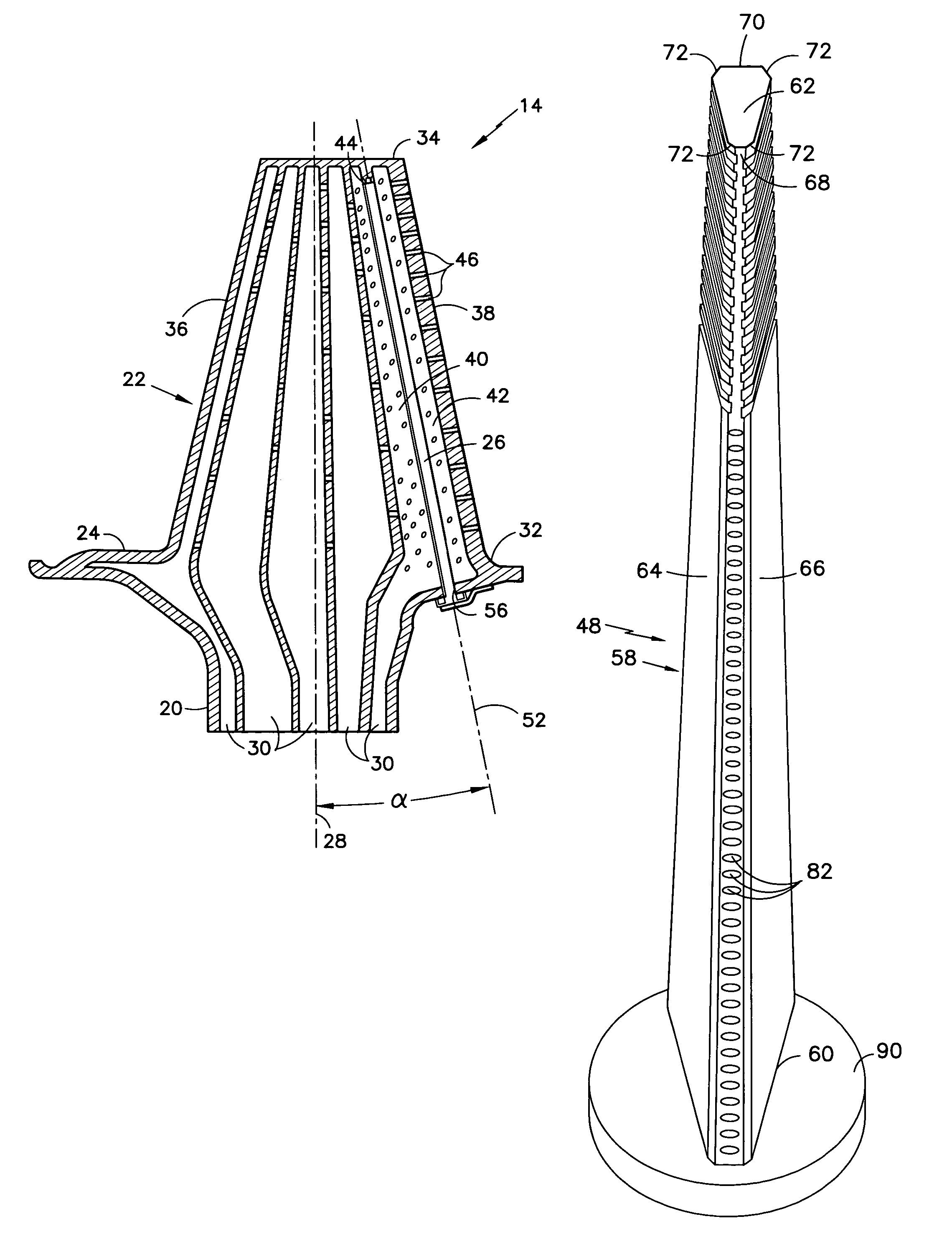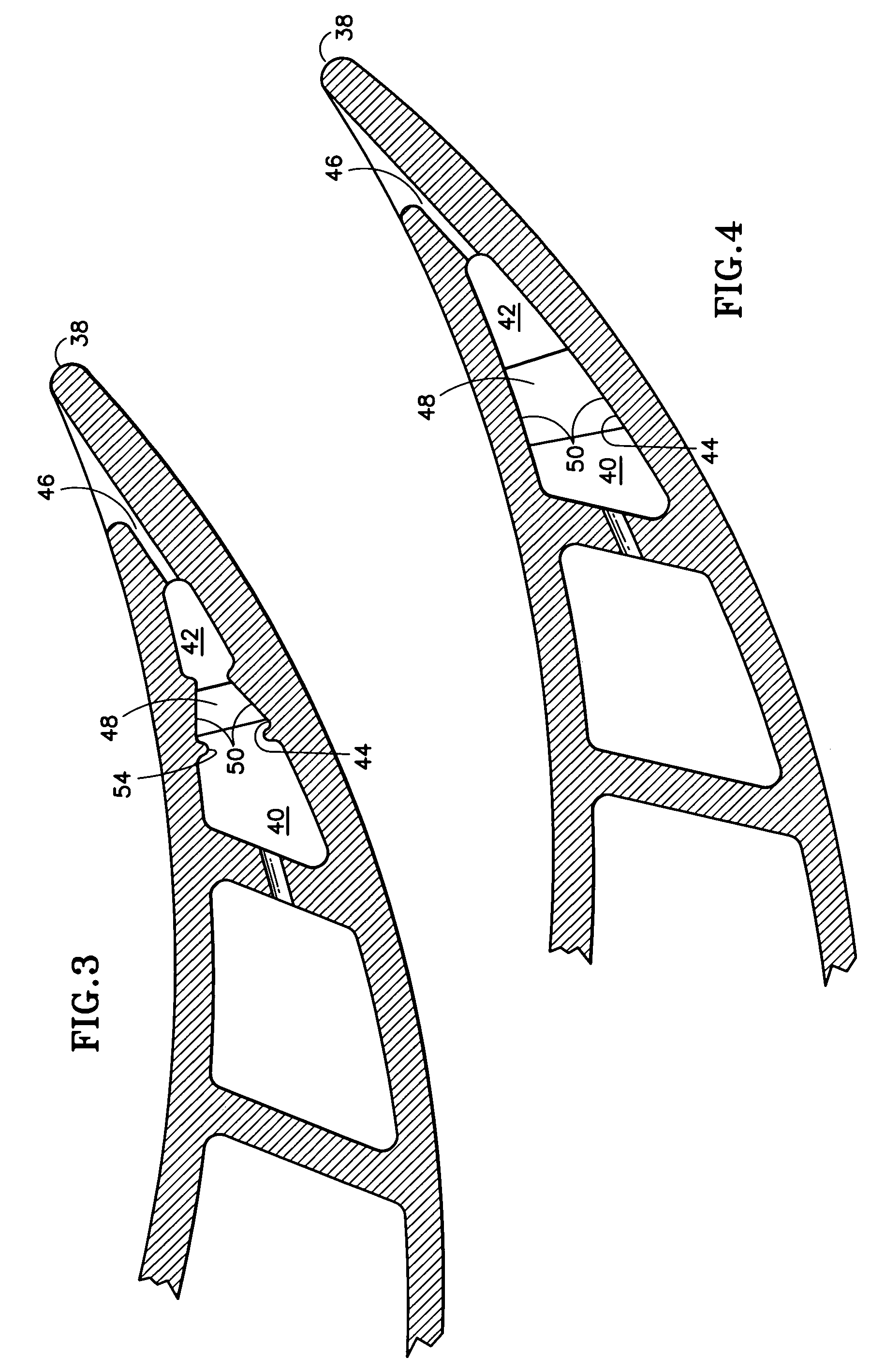Rotor blade with a stick damper
a technology of rotating blades and dampers, applied in the field of rotating blades, to achieve the effects of reducing stress, enhancing cooling, and reducing cross-sectional area
- Summary
- Abstract
- Description
- Claims
- Application Information
AI Technical Summary
Benefits of technology
Problems solved by technology
Method used
Image
Examples
Embodiment Construction
[0028]Referring to FIG. 1, a rotor blade assembly 10 for a gas turbine engine is provided having a disk 12 and a plurality of rotor blades 14. The disk 12 includes a plurality of recesses 16 circumferentially disposed around the disk 12 and a rotational centerline 18 about which the disk 12 may rotate. Each blade 14 includes a root 20, an airfoil 22, a platform 24, and a damper 26 (see FIG. 2). Each blade 14 also includes a radial centerline 28 passing through the blade 14, perpendicular to the rotational centerline 18 of the disk 12. The root 20 includes a geometry (e.g., a fir tree configuration) that mates with that of one of the recesses 16 within the disk 12. The root 20 further includes conduits 30 through which cooling air may enter the root 20 and pass through into the airfoil 22.
[0029]Referring to FIGS. 2 and 3, the airfoil 22 includes a base 32, a tip 34, a leading edge 36, a trailing edge 38, a first cavity 40, a second cavity 42, and a passage 44 between the first and se...
PUM
 Login to View More
Login to View More Abstract
Description
Claims
Application Information
 Login to View More
Login to View More - R&D
- Intellectual Property
- Life Sciences
- Materials
- Tech Scout
- Unparalleled Data Quality
- Higher Quality Content
- 60% Fewer Hallucinations
Browse by: Latest US Patents, China's latest patents, Technical Efficacy Thesaurus, Application Domain, Technology Topic, Popular Technical Reports.
© 2025 PatSnap. All rights reserved.Legal|Privacy policy|Modern Slavery Act Transparency Statement|Sitemap|About US| Contact US: help@patsnap.com



